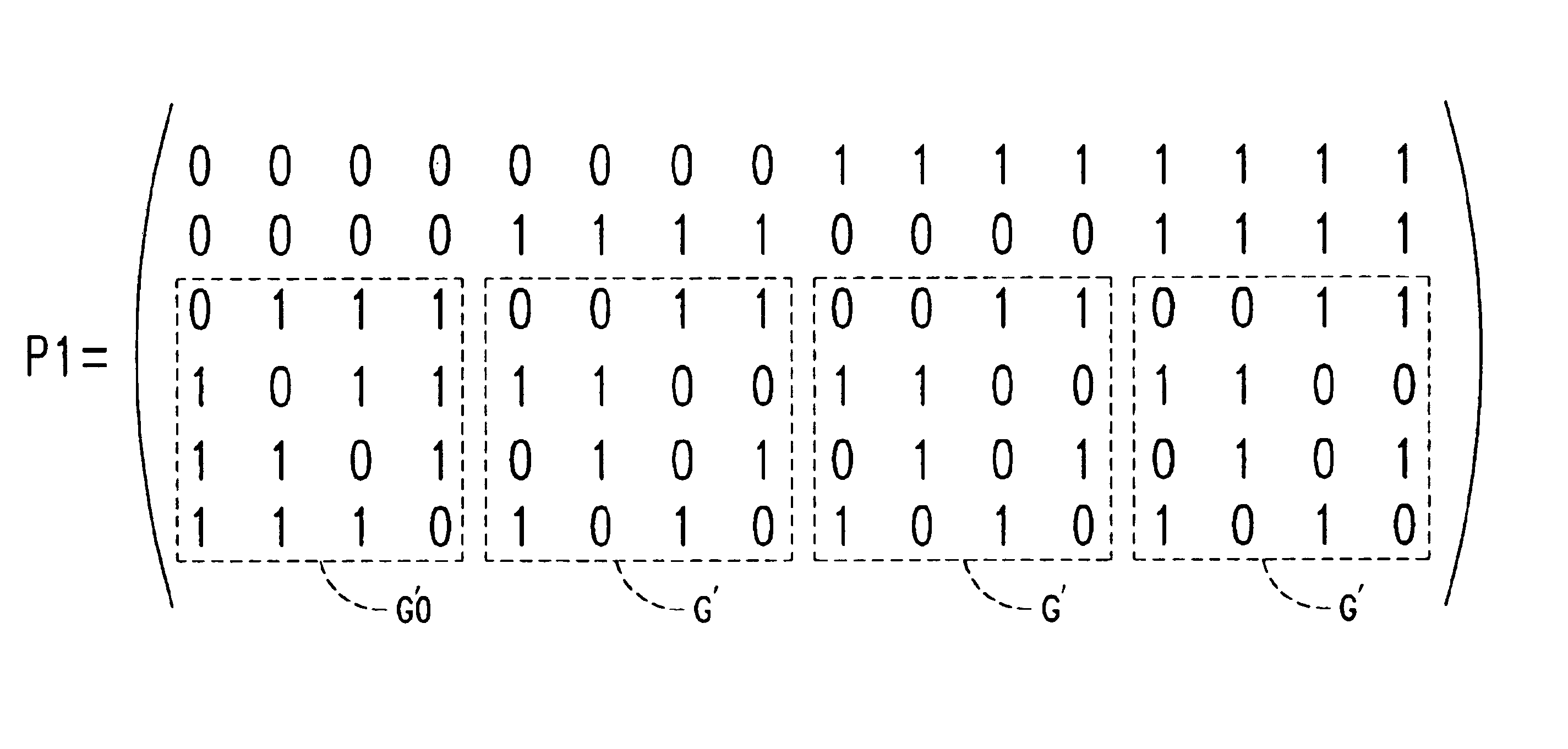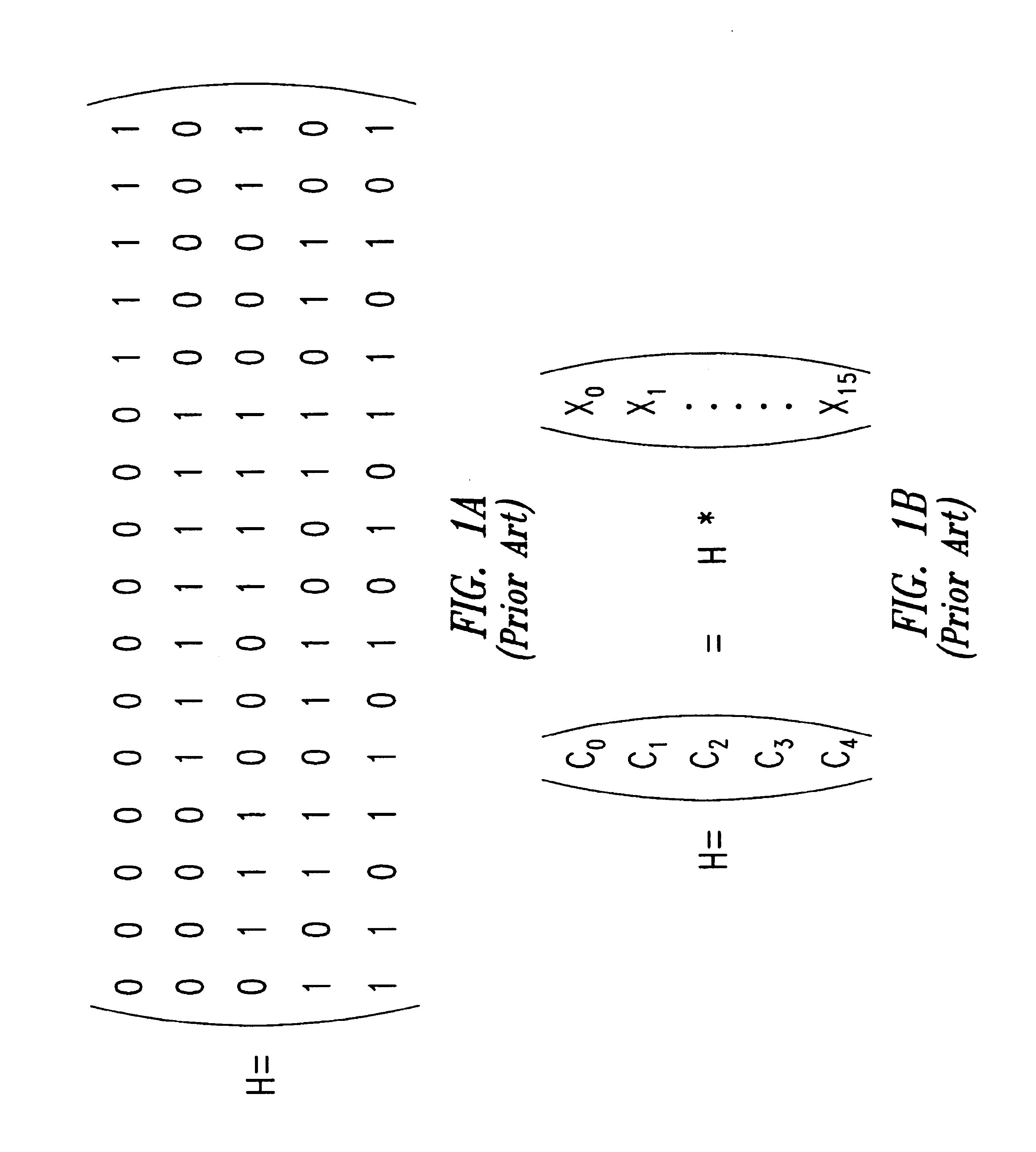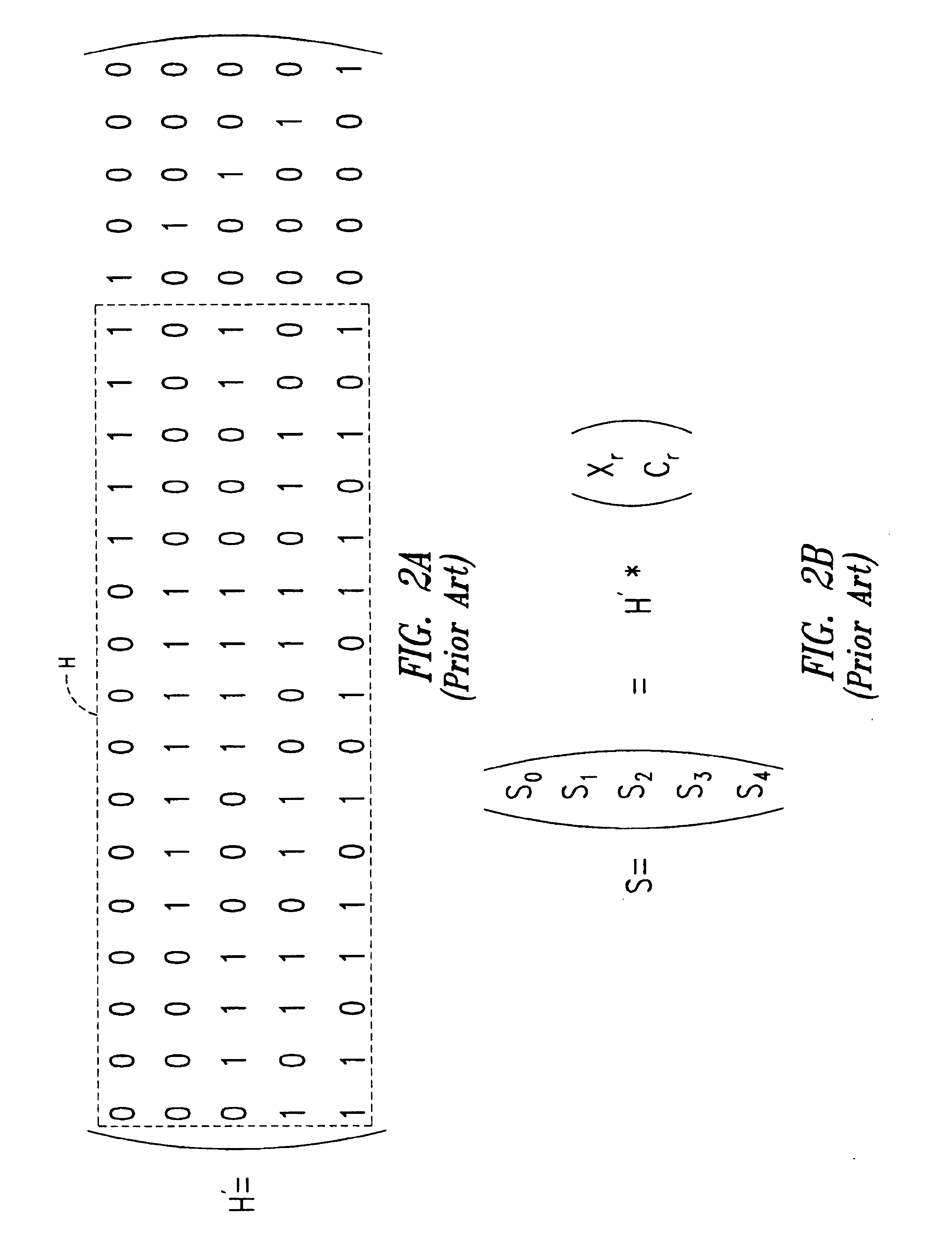High-efficiency error detection and/or correction code
a correction code and error detection technology, applied in the field of high-efficiency error detection and/or correction codes, can solve the problems of inability unable to detect two errors, etc., to achieve the effect of easy decoding
- Summary
- Abstract
- Description
- Claims
- Application Information
AI Technical Summary
Benefits of technology
Problems solved by technology
Method used
Image
Examples
first embodiment
[0050]FIG. 3A illustrates a parity check matrix M1 used to calculate detection bits in the present invention.
[0051]Matrix M1 is a 5×16 matrix. It is intended for being multiplied by a vector representative of a 16-bit word to be coded to provide 5 error detection bits Ci. Matrix M1 is formed based on a repetitive pattern. The repetitive pattern is represented by a matrix G of dimensions 4×8 and is repeated twice. Matrix G is equal to: G=(11110000000011110011001101010101).
[0052]Matrix G is chosen so that each column of matrix G is different from another column of matrix G and, if any two columns of matrix G are added modulo 2, this provides no other column of matrix G. Thus, the logic addition of the second and third columns of matrix G provides (1001)⊕(1010)=(0011) [symbol ⊕ designates the XOR operation], which corresponds to no column of G. This is done to be able to detect two errors, as will be seen hereafter.
[0053]The two matrixes G, which form sub-matrixes of matrix M1, are pla...
second embodiment
[0093]FIGS. 5A, 5B, and 6 illustrate the present invention.
[0094]FIG. 5A illustrates a parity check matrix P1 for a 16-bit word to be coded. Matrix P1 is a matrix of dimensions 6×16.
[0095]The first 4×4 block located to the bottom left of matrix P1 is: G′0=(0111101111011110).
[0096]Further, matrix P1 includes a repetitive pattern in the form: G′=(gg_gggggg_g_gg_ggg_gg_),
with g=1, {overscore (g)} being the complement to 1 of g. G′ is a matrix chosen so that each column of matrix G′ is different from another column of matrix G′ and the sum modulo 2of two of the columns of matrixes G′ is never equal to one column of G′.
[0097]Matrixes G′ and G′0 are sub-matrixes of matrix P1, and they will be so designated when necessary hereafter.
[0098]In matrix P1, matrix G′ is present 3 times, one matrix G′ following another to occupy the rest of the last four lines of matrix P1. The line just above matrixes G′0 and G′ (second line of P1) is formed of a sequence of four “0s”, followed by four ...
PUM
 Login to View More
Login to View More Abstract
Description
Claims
Application Information
 Login to View More
Login to View More - R&D
- Intellectual Property
- Life Sciences
- Materials
- Tech Scout
- Unparalleled Data Quality
- Higher Quality Content
- 60% Fewer Hallucinations
Browse by: Latest US Patents, China's latest patents, Technical Efficacy Thesaurus, Application Domain, Technology Topic, Popular Technical Reports.
© 2025 PatSnap. All rights reserved.Legal|Privacy policy|Modern Slavery Act Transparency Statement|Sitemap|About US| Contact US: help@patsnap.com



